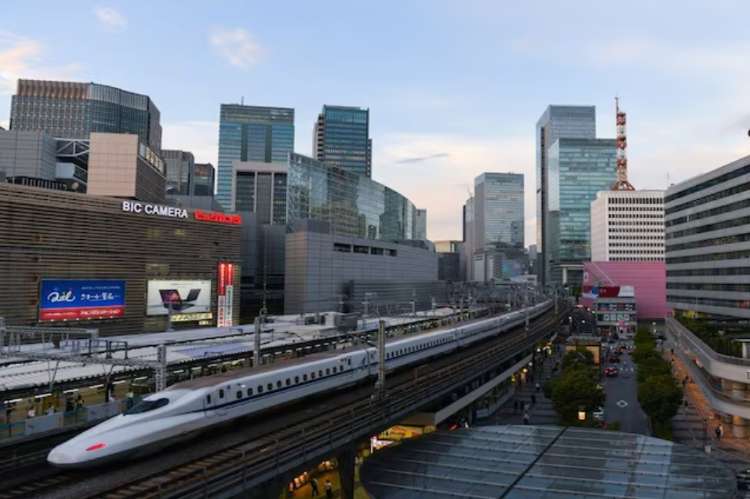
The compact city model for urban India: India is urbanising at a breathtaking pace, even as infrastructure and services struggle to keep up. Nearly 70% of the urban infrastructure required by 2047 is yet to be built, with investment needs estimated at $840 billion by 2036 — more than double recent spending levels. The choice is stark: allow unchecked sprawl that locks in congestion, emissions and inequality, or pursue compact, transit-first cities that multiply productivity and resilience.
India has already experimented with new urban models through the Smart Cities Mission, launched in 2015 to modernise infrastructure and improve quality of life in 100 cities. The programme demonstrated ambition but delivered mixed outcomes. While some cities such as Indore and Surat have made visible gains in cleanliness, digital governance and public services, many others struggled with fragmented financing, weak institutional capacity, and a tendency to prioritise technology gadgets over systemic planning.
The case for a compact, transit-first urban form
Instead of reimagining the urban form, projects often remained piecemeal—command centres, LED lighting, and surveillance systems. The experience reveal a critical lesson: smartness cannot be an overlay on unplanned growth. It must be embedded in the very design of compact, transit-oriented cities, as Japan has done. Japan’s rail-integrated, compact city model honed over decades by public policy and private railways, offers a practical template for India’s next 100 growth cities.

The evidence is clear that dense, mixed-use development around mass transit lowers per-capita infrastructure costs, reduces emissions, and improves access to jobs and services. The OECD’s assessment of compact city model highlights the benefits of concentrating development in transit-served areas, curbing car dependence and infrastructure duplication. Japan embedded this logic in national spatial planning — Compact City & Network — steering population and services to rail-served hubs through local Location Normalisation Plans. India’s metros and RRTS corridors should be planned the same way: not as mobility projects, but as city-shaping tools.
Japan’s ministry of land, infrastructure, transport and tourism defines transit-oriented development (TOD) as land-use and transport integration anchored by stations, with walkable catchments, mixed uses and high floor-area ratios. Its official guidebook details station-area redevelopment, pedestrian priority, and seamless interchanges — practices that make rail the default for daily life. India already has a National TOD Policy and NMT guidance; what is missing is rigorous, Japanese-style execution across state statutes, development control rules, and financing frameworks.
READ I India’s infant mortality rate shows uneven progress
How rail-integrated communities work
Japan’s private railways perfected a self-reinforcing model: build the rail line; master-plan and develop the land at and between stations; add housing, retail, schools, leisure and jobs; let rising land values and non-fare revenues cross-subsidise high-quality transit. From Hankyu’s early Kobayashi Ichizō model to Tokyu Corporation’s contemporary town-building, value capture and placemaking have funded reliable services without perpetual budgetary strain. India’s growth cities can adapt this flywheel—release TOD-area FAR, assemble land, auction development rights, and recycle proceeds into station-area public goods and feeder services.
A practical illustration is the Futako-Tamagawa redevelopment on Tokyu’s Den-en-Toshi Line, where integrated retail, offices, housing and public spaces created a destination that feeds the rail network through the day, not just at peak hours. The lesson is simple: treat stations as civic hearts, not mere platforms; capture the upside to fund the backbone.
The compact city model, not as an afterthought
Japan’s cities have been repeatedly stress-tested by earthquakes, tsunamis and typhoons. Out of tragedy emerged a planning culture that bakes resilience into codes, layouts and lifelines—redundant networks, elevated critical assets, strict building standards, and community-level preparedness. World Bank’s “Learning from Megadisasters” and subsequent analyses distil transferable lessons: risk assessments must shape where and how to build; infrastructure must fail safely; recovery should “build back better.” India’s hill and coastal growth nodes, now frequently hit by floods and landslides, should adopt these standards as non-negotiables for approvals in TOD and urban expansion zones.

Compactness strengthens resilience: shorter networks are easier to harden; critical services are closer to populations; evacuation and emergency access are simpler to plan. Japanese cities have also used digital twins and smart-grid pilots to bolster continuity. Kitakyushu’s Eco-Town shows how industrial symbiosis, resource recovery and low-carbon logistics can be embedded in city design—relevant to India’s industrial corridors seeking green competitiveness.
Toyama City offers a caution and a clue. Faced with ageing and population decline, the city reversed car-dependent sprawl by re-centring growth along a modernised tram backbone, consolidating services and amenities within walkable districts. The compact city model cuts service delivery costs, revived ridership and curbed emissions—an efficiency play India can use even as populations grow, because the economics of proximity apply in both directions. Indian municipalities straining to fund water, solid waste and street maintenance will find that compactness stretches every rupee.
India is moving—but too slowly and unevenly
There is momentum. Jaipur has issued a draft policy to designate TOD zones within 800 metres of transit nodes with higher FAR and mixed use, echoing national guidance. Yet across the top eight metros, built-up footprints have doubled since the mid-1990s, often as low-rise sprawl at the edge, locking in long commutes and expensive last-mile infrastructure. The risk is clear: without a Japanese-style whole-of-system approach—land assembly, clear rights of way, enforceable street design, integrated ticketing, and value capture—TOD will remain a brochure idea.
India’s investment needs are enormous; ad hoc, plot-by-plot approvals will not deliver bankable cities. National and state governments must align statutes and finance, as Japan did by integrating land, transport and housing policy under MLIT’s umbrella and using white papers to set direction and accountability.
A policy for India’s growth cities
Legislate rail-integrated city zones: Notify station influence areas (e.g., 500–800 metres) as special planning districts with by-right higher FAR tied to public-realm delivery: shaded footpaths of minimum width, continuous cycling lanes, universal access, and car-lite street hierarchies. Make MoHUA’s NMT specifications and National TOD Policy binding in these districts, with an independent design review.
Professionalise land value capture: Create state-level TOD funds capitalised by a share of development rights premiums, betterment levies, and station-area ground rents. Ring-fence proceeds to finance rail O&M, feeder buses, and public spaces. Borrow the Japanese private-railway playbook—master-developer roles for public agencies or PPPs that plan entire corridors, not parcels.
Make resilience a pre-clearance: Require disaster risk screening for all major approvals, with “build-back-better” standards embedded in codes. Prioritise compact growth in lower-risk zones; where expansion into riskier areas is unavoidable, mandate nature-based buffers, elevated utilities, and community shelters, drawing on Japan’s megadisaster lessons.
Align institutions and data: Consolidate urban transport, land and housing functions in empowered metropolitan authorities with accountable mandates—mirroring MLIT’s integrated approach. Establish urban observatories to publicly track corridor-level indicators: mode share, housing starts within station areas, sidewalk continuity, and access to essentials within 15 minutes.
Export-ready green industry districts: Use Kitakyushu-style eco-industrial strategies in TOD-adjacent logistics and manufacturing hubs—shared utilities, circularity standards, and low-carbon energy—to raise productivity and meet global supply-chain decarbonisation norms.
Japan’s compact city model is not a museum piece; it is a living system of institutions, finance, street design and civic habit that makes proximity profitable. India’s urban century will be won or lost in how new districts are drawn around stations, how sidewalks are poured, and how land value is recycled back into public goods. The choice is between cities that sprawl and stall, and cities that cluster and compound. The latter has a proven manual—and it speaks Japanese.
